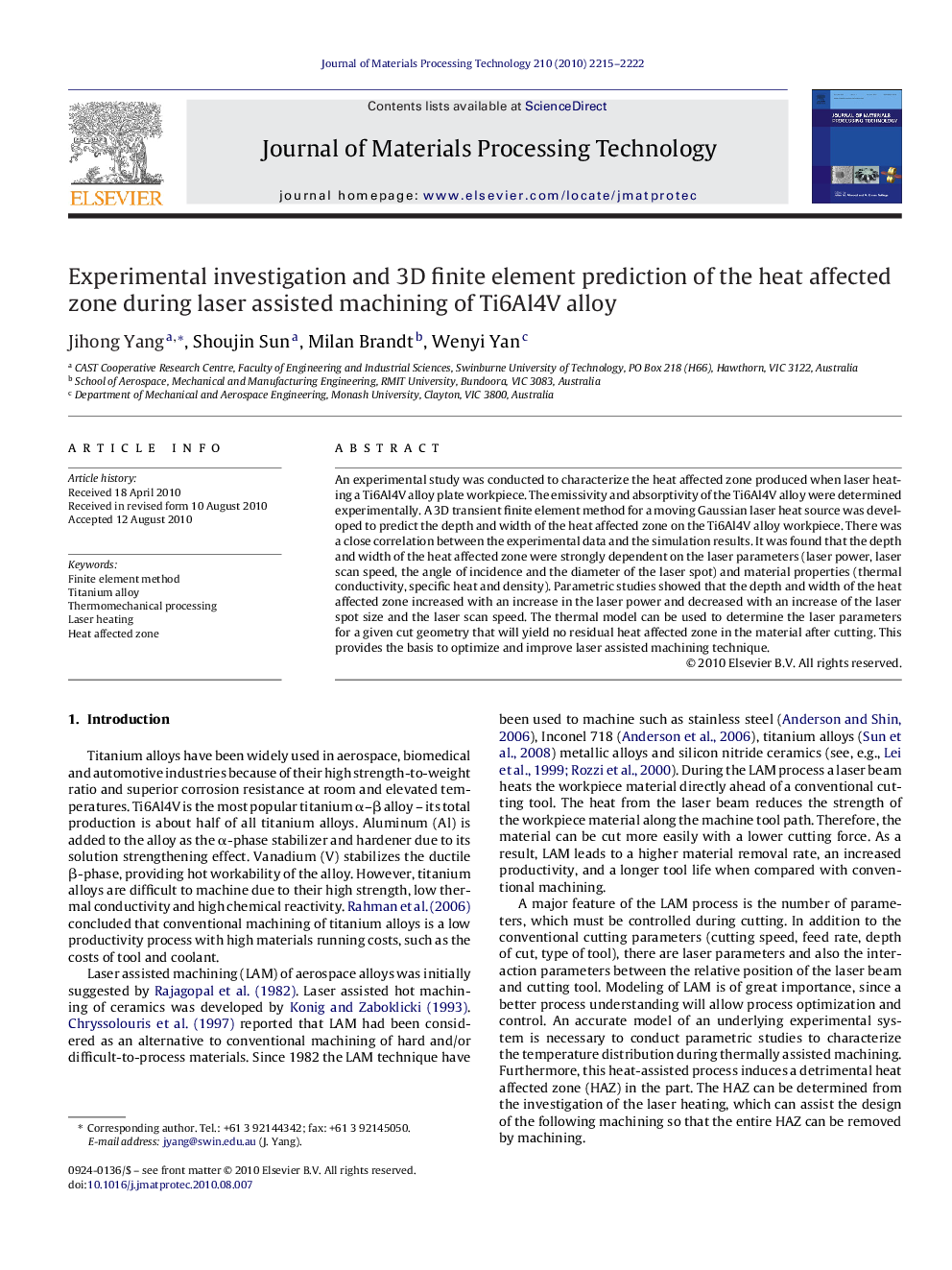| Article ID | Journal | Published Year | Pages | File Type |
|---|---|---|---|---|
| 796029 | Journal of Materials Processing Technology | 2010 | 8 Pages |
An experimental study was conducted to characterize the heat affected zone produced when laser heating a Ti6Al4V alloy plate workpiece. The emissivity and absorptivity of the Ti6Al4V alloy were determined experimentally. A 3D transient finite element method for a moving Gaussian laser heat source was developed to predict the depth and width of the heat affected zone on the Ti6Al4V alloy workpiece. There was a close correlation between the experimental data and the simulation results. It was found that the depth and width of the heat affected zone were strongly dependent on the laser parameters (laser power, laser scan speed, the angle of incidence and the diameter of the laser spot) and material properties (thermal conductivity, specific heat and density). Parametric studies showed that the depth and width of the heat affected zone increased with an increase in the laser power and decreased with an increase of the laser spot size and the laser scan speed. The thermal model can be used to determine the laser parameters for a given cut geometry that will yield no residual heat affected zone in the material after cutting. This provides the basis to optimize and improve laser assisted machining technique.
